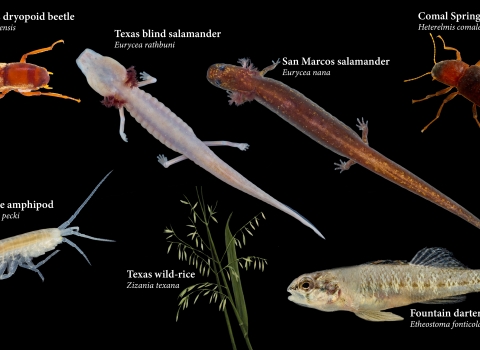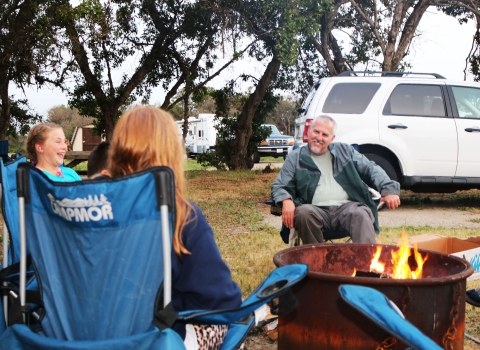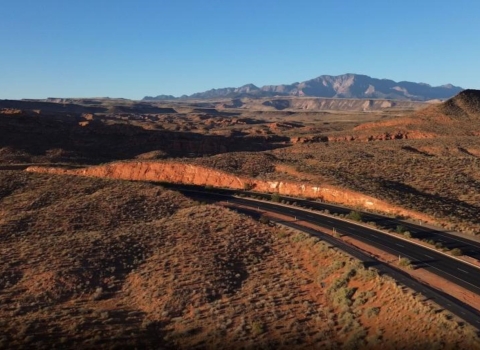Coastal areas are highly vulnerable to climate change climate change
Climate change includes both global warming driven by human-induced emissions of greenhouse gases and the resulting large-scale shifts in weather patterns. Though there have been previous periods of climatic change, since the mid-20th century humans have had an unprecedented impact on Earth's climate system and caused change on a global scale.
Learn more about climate change , and many have already been dramatically altered and stressed by storms, sea level rise, human activity and invasive species invasive species
An invasive species is any plant or animal that has spread or been introduced into a new area where they are, or could, cause harm to the environment, economy, or human, animal, or plant health. Their unwelcome presence can destroy ecosystems and cost millions of dollars.
Learn more about invasive species . Coastal wetland habitat conservation is critical to ensure that important habitat, wildlife and coastal communities continue to thrive for future generations. Today, the U.S. Fish and Wildlife Service will award more than $27 million to support 33 projects in 14 coastal states to protect, restore or enhance almost 28,000 acres of coastal wetlands and adjacent upland habitats under the National Coastal Wetlands Conservation Grant Program.
State, local and tribal governments, private landowners, conservation groups and other partners will contribute more than $22.2 million in additional funds to these projects. These grants will have wide-reaching benefits for local economies, people and wildlife – boosting coastal resilience, reducing flood risk, stabilizing shorelines and protecting natural ecosystems.
“The projects funded by the National Coastal Wetlands Conservation Grant Program will strengthen partnerships with numerous public, non-profit and private stakeholders while directly conserving and restoring thousands of acres of vital coastal habitat and inland wetlands,” said Service Principal Deputy Director Martha Williams. “These grants will help ensure that coastal resources that are put at risk by pollution, development and the uncertainties of a changing climate are conserved.”
The 2021 grants will also help recover coastal-dependent species, enhance flood protection and water quality, provide economic benefits to coastal communities and tribes, and increase outdoor recreational opportunities.
States receiving funds this year are Alabama, Alaska, California, Florida, Georgia, Hawai‘i, Maine, New Jersey, North Carolina, South Carolina, Texas, Virginia, Washington and Wisconsin. Click here for the complete list of projects funded by the 2021 grant program.
Wetlands in coastal watersheds are diverse and complex ecosystems that are vital to the nation’s economy and an important part of the nation’s natural heritage. Coastal wetlands in the United States include both salt marshes in estuaries and freshwater wetlands that extend inland within the coastal drainages. They provide crucial habitat for fish, birds and other wildlife, including breeding grounds, nurseries, shelter and food.
The program, funded in part through taxes paid on fishing equipment and fuel purchases by recreational anglers and boaters, creates significant benefits for the American public. The billions of dollars generated through recreational angling, boating, waterfowl hunting and birdwatching benefit communities in the vicinity of wetlands restoration projects.
The Service awards grants of up to $1 million to states based on a national competition, which enables states to determine and address their highest conservation priorities in coastal areas. Since 1992, the Service has awarded more than $400 million in grants under the program.
Black River State Park – Mead Tract
The South Carolina Conservation Bank is awarded $1 million to acquire and protect 841 acres of diverse coastal habitats along the Black River in Williamsburg County, South Carolina. The project will help protect high priority species and habitats, including the state endangered swallow-tailed kite and federally threatened wood stork. The tract will be part of a new state park along the river corridor that will create a growing network of public access and provide recreation and economic development opportunities.
Stillaquamish Tidal Wetland Acquisition Phase 2
The Washington State Department of Ecology, in partnership with the Stillaguamish Tribe, is awarded $1 million to acquire 537 acres of former coastal wetlands in Snohomish County, Washington that will benefit a wide range of fish and wildlife species, including Chinook salmon populations. It will link together conserved lands to the north and south and create a protected swath of over 1,200 acres. Protecting and restoring these lands will also lead to benefits for waterfowl and shorebirds that use the Pacific Flyway. Monitoring data collected on the bird, fish and vegetative communities at the site will inform future tidal wetland projects in Port Susan and Skagit Bay.
San Francisco Bay Wetlands Revegetation Project Phase 2
The California Coastal Conservancy is awarded $1 million to enhance 2,270 acres of degraded tidal marsh in the San Francisco Estuary. This project includes planting 40,000 native seedlings on 500 acres in Central Bay, and treating non-native Spartina on 1,770 acres of tidal marsh habitat in the North Bay by 2024. Establishing native vegetation in the tidal marsh and adjacent habitat will provide foraging, nesting, breeding and high tide refuge habitat for the state and federally endangered California Ridgway’s rail. Native tidal wetlands will also provide valuable green infrastructure that functions as resilient shoreline protection.
Kasilof River “Dinosaur Parcel” Acquisition
The Alaska Department of Natural Resources, in partnership with the Conservation Fund, is awarded $338,600 to acquire 309 acres of pristine habitat along the Kasilof River on the western Kenai Peninsula in southcentral Alaska. The project will protect 283 acres of coastal wetland habitat in the Kasilof River Flats and will be added to an existing state park unit for wildlife habitat and compatible public recreation. The property also provides migratory, nesting and overwintering habitat for 165 bird species such as rock sandpipers and will benefit Chinook, sockeye, coho and pink salmon and the federally endangered Cook Inlet beluga whale.
He‘eia Wetlands Restoration
The Hawai‘i Department of Land and Natural Resources, Division of Aquatic Resources is awarded $966,501 to restore a rare freshwater wetland system in the He‘eia wetlands located on the island of O‘ahu that will recreate the hydrological and vegetation conditions necessary for native birds and diadromous and estuarine fish to thrive. The restoration of the He‘eia wetlands will increase biodiversity by opening up waterways, recreating freshwater pond and wetland systems and replanting native vegetation to increase the abundance and diversity of native birds, while providing habitat connectivity for Hawai‘i’s unique diadromous fish.
More information is available online at: http://www.fws.gov/coastal/CoastalGrants/index.html.
The National Coastal Wetlands Conservation Grant Program is administered by the Service and funded by taxes or import duties collected from the sale of recreational fishing equipment, boats, electric motors and motorboat and small engine fuels under the authority of the Dingell-Johnson Sport Fish Restoration Act.



